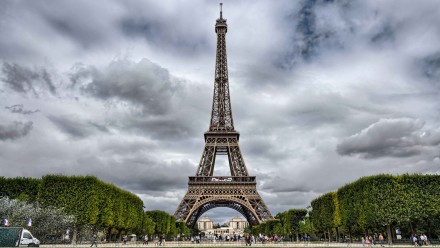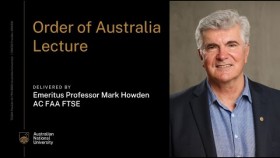ANU experts discuss the Paris climate summit
The UN Framework on Climate Change Conference of the Parties (COP21) meeting in Paris will kick off on Monday 30 November 2015 with a meeting of world leaders, including Australian Prime Minister Malcolm Turnbull.
The conference aims to achieve a legally-binding agreement that will combat climate change and boost a transition to low-carbon economies.
Most countries have already submitted their emissions reductions targets, known as Intended Nationally Determined Contributions, to the UNFCCC. Australia has committed to cut its emissions by 26 to 28 per cent by 2030 based on 2005 levels.
The Climate Change Institute at The Australian National University (ANU) is sending a delegation of academics and students. Here are some of their thoughts ahead of the meeting.
Adjunct Professor Howard Bamsey
Former Australian Government climate negotiator
ANU Regulatory Institutions Network
“This conference is very different from previous ones and as a result has the potential, if all goes to plan, to launch a new, more positive era for the negotiations.
“Two key elements distinguish COP21: the substantive outcome is already bankable in the form of upfront commitments to action from almost all countries (covering over 90 per cent of global emissions) and this meeting will formalise the universality of obligation to reduce emissions. This latter step has been an Australian objective since the very beginning of the UN process.
“Although the national commitments as they stand, if fully implemented, will not limit warming to less than 1.5 (the island countries' aim) or 2 degrees above the pre-industrial level, these elements and provisions on transparency of action and regular review of commitments do create a credible pathway to at least the 2 degrees objective.
“What could go wrong? Almost anything given the inertia in a system which has seen few if any previous breakthroughs of such moment. But especially disagreement over developed country financial assistance to the developing world beyond 2020 and failure to resolve lingering concerns of developing countries that they should be treated differently from developed countries in terms of emissions reductions. The final outcome could rest on a UN-style imprecise and obscure trade-off on these two issues.”
Associate Professor Frank Jotzo
Director, Centre for Climate Economics and Policy
Deputy Director ANU Crawford School of Public Policy
“Under the Paris climate agreement most countries of the world have emissions reductions targets. These nationally-based pledges are at the heart of the Paris agreement, and they are already in the bag. They will not be legally binding but that has made it easier for countries to make their pledges.
“Taken together the pledges imply a much better global emissions outcome than would be the case without climate action, and better than what the world is on track for so far. But they are not yet nearly enough to limit global warming to safe levels. Paris is expected to produce an agreement to ratchet up countries’ ambition every five years.
“There is every reason to believe that more ambitious targets will be possible, because targets tend to be easier to achieve than we think. Clean energy is rapidly becoming competitive, and more and more countries see effective carbon reduction policy as in their national interest.
“An issue to watch at Paris is the global community’s stated long-term goal. Will it be a re-affirmation of the 2 degree goal, or something more ambitious like 1.5 degrees? Or perhaps a long-term goal of net-zero emissions or decarbonisation, and if so by what year?
“Another contentious issue will be climate finance. Developing countries will ask for much more than most developed countries are prepared to agree to.
“Australia’s stance will be keenly watched. Seen as a brake on climate action under the previous prime minister, Australia is now expected to once more play an active and constructive role. By putting on a strong presence with Prime Minister Turnbull, Environment Minister Hunt and Foreign Minister Bishop, the government is signalling that it is taking the meeting seriously.”
Professor Mark Howden
Director, ANU Climate Change Institute
“The Paris negotiations are about countries matching their emission targets to their level of concern about their vulnerability to climate change.
“There is growing evidence that the climate in Australia and throughout the Asia-Pacific region is already changing and this has negative consequences for agriculture, water resources, mining, cities, health, biodiversity and many other sectors. This is coming strongly into focus in 2015 with the globe heading for more record-breaking temperatures.
“The continuation of current trends makes more climate impacts likely due to climate change resulting from past emissions as well as from the future emissions trajectories being negotiated at the Paris meeting. The emission reductions announced to date commit the globe to temperature rises of around 3 degrees.
“Consequently, the Paris meeting can reinforce commitments to support adaptation so as to reduce climate vulnerabilities and enhance sustainable development.”
Luke Kemp
Lecturer at ANU with a focus on climate negotiations
“The shape of the Paris climate agreement is relatively clear: it will be a pledge and review system where countries put forward nationally determined commitments for climate action. The agreement itself will almost certainly be a legally-binding protocol; however the pledges will not be binding under international law.
“The key issues of contention will be financing for developing countries and how differentiation occurs between developed and developing countries. These topics could cause a repeat of Copenhagen with a collapse of talks in the closing hours. However this is improbable. An agreement is likely to be adopted due to the sheer amount of invested political will and public expectations.
“The agreement and accumulated pledges will not put the world on a pathway to limit global warming to 2 degrees above pre-industrial levels. However, it is hoped that it will provide a framework to increase and encourage international climate action over time.
“Relatively weak pledges relying on country peer-pressure to increase climate action after 2020 (when the agreement comes into force) is likely to be too little too late. The Paris climate agreement will help strengthen the groundswell of global climate action, but it will not be the agreement that the world and future needs.”
Dr Jeroen van der Heijden
ANU Regulatory Institutions Network
“A key challenge from now till 2050 is rapid urbanisation in the global south and achieving a transition to resource-efficient and low-carbon cities in the global north.
“Cities account for the consumption of 70 per cent of all resources (including energy) and the production of 70 per cent of all wastes (including CO2). In the global south we can expect an acceleration of resource consumption and carbon emissions due to urbanisation, economic growth, and national economic policies that will push us well beyond global emission levels to keep the earth under 2 degrees warming. In the global north, the problem is not so much development and ongoing urbanisation, but the lack of transformation, as buildings and infrastructure are generally updated once every 50 to 70 years.
“If we don't rapidly transform our existing highly unsustainable cities we will not be able to keep global emission levels on a trajectory to keep the earth under 2 degrees warming. Technology and knowledge on behavioural change have been available to help environmentally sustainable development and transformation, but there has been little uptake by national governments globally.
“International pledges made by national governments normally don't involve city governments (apart from Agenda 21) and it is unlikely that the Paris Agreement will. At the level closest to the key source of climate change, cities, this agreement will thus be of little avail.”
Dr Andrew Glikson
Earth and paleo-climate scientist
ANU School of Archaeology & Anthropology
“Average global temperatures would already be close to 2 degrees Celsius above pre-industrial levels but for the masking effects of sulphur aerosols in the atmosphere.
“A critical threshold is represented by the rise of atmospheric carbon dioxide (CO2) above 400 parts per million, at the approximate rate of 2 ppm CO2 per year, arising from the annual emission of some 36 billion tonnes of CO2, as well as amplifying feedbacks from warming oceans, desiccated vegetation, fires and release of methane. Australia’s domestic CO2 emissions are tripled by our coal exports, making us the highest per capita emitter in the world.
“For the world to achieve a meaningful reduction in greenhouse gases (GHGs), even the higher reduction targets discussed in Paris may not be enough to prevent a further rise in GHGs to about 500 ppm toward the end of the century. Such a rise would reach the upper stability limit of the Greenland and West Antarctica ice sheets, committing us to sea level rise on the scale of many meters.
“Further deep cuts in CO2 emissions need to be combined with global efforts at the draw-down of CO2, using soil carbon and chemical sequestration methods, as well as urgent application of adaptation measures.”











